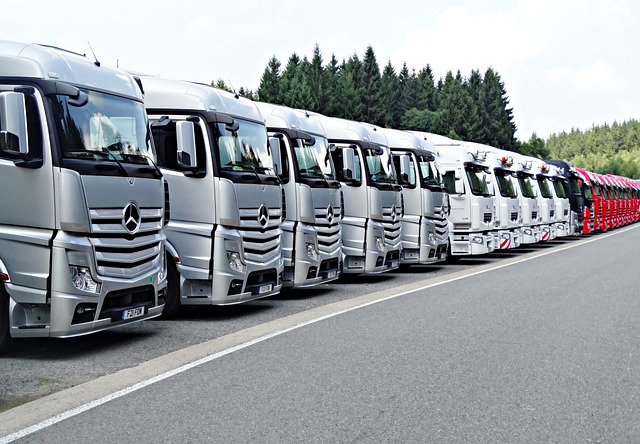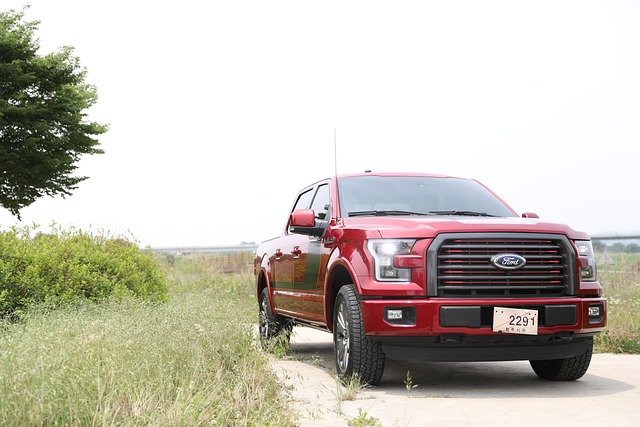Looking to register your car in California? This comprehensive guide walks you through the process, from understanding key requirements to paying fees. It breaks down essential steps like gathering necessary documents, visiting the DMV for critical VIN verification, and completing either an online or paper registration application. Get ready to hit the road legally!
- Understand California Vehicle Registration Requirements
- Gather Necessary Documents for Car Registration
- Visit the DMV for Vehicle Identification Number (VIN) Verification
- Complete the Online Registration Process or Paper Application
- Pay Car Registration Fees and Receive Your License Plate
Understand California Vehicle Registration Requirements

Before registering your car in California, it’s crucial to understand the state’s specific requirements for vehicle registration. The California Department of Motor Vehicles (DMV) mandates that all vehicles operated within the state be properly registered and bear valid license plates. This process involves a comprehensive inspection, including a DMV VIN verification, to ensure the vehicle meets safety and environmental standards.
Additionally, you’ll need to provide proof of insurance and complete necessary paperwork. One innovative service that can aid in this process is a mobile vin verification, which streamlines the initial inspection stage. A vin inspection by a qualified mobile vin verifier ensures your vehicle’s history is accurately checked against national databases, meeting California’s registration criteria efficiently.
Gather Necessary Documents for Car Registration

Before heading to the California Department of Motor Vehicles (DMV) for car registration, ensure you have all the required documents. This process is straightforward but requires careful preparation. You’ll need your vehicle’s title, which proves ownership and must be signed by the seller if buying from a private party. Additionally, gather your driver’s license or state ID card, proof of insurance, and a valid registration for any out-of-state plates you’re replacing.
One crucial step is to undergo a DMV VIN verification, where they’ll check your vehicle identification number (VIN) against their records to ensure it matches the details on file. You can also opt for a convenient mobile vin inspection or verification service to save time and effort. This involves a licensed inspector visiting you to cross-reference the VIN with official databases, making the registration process even smoother.
Visit the DMV for Vehicle Identification Number (VIN) Verification

After gathering all necessary documents for your car registration, it’s time to take a step towards completing the process by verifying your Vehicle Identification Number (VIN). Head down to your local California Department of Motor Vehicles (DMV) office or consider using a convenient mobile vin verifier service. The DMV offers VIN verification as part of their services, ensuring that the vehicle’s identification number is accurate and matches the details on record.
This process involves a quick inspection where an official will cross-reference the VIN with their database to confirm its authenticity. It’s especially crucial if you’re buying a used car, as it safeguards against potential fraud or theft. Alternatively, some services provide mobile vin inspections, allowing for added convenience, particularly for busy individuals who prefer a more flexible approach.
Complete the Online Registration Process or Paper Application

Completing the registration process for your vehicle in California can be done through two methods: online or by submitting a paper application. Both options have their advantages, but going digital offers several perks such as faster processing times and convenient scheduling of appointments, including a dmv vin verification. The online route allows you to input your vehicle’s information directly, including its unique Vehicle Identification Number (VIN), which is crucial for accurate record-keeping and ensuring compliance with California’s regulations.
For those who prefer or need an alternative approach, the paper application still requires a thorough VIN inspection. This can be done by scheduling a visit to a DMV office where they will conduct a mobile vin verification to ensure the vehicle’s details match the documentation provided. Regardless of the method chosen, ensuring your car’s registration is up-to-date and accurate is essential for legal compliance and peace of mind while on the road.
Pay Car Registration Fees and Receive Your License Plate

After completing your car’s registration application, the next step is to pay the required fees. These include the registration fee and a vehicle identification number (VIN) verification charge. The California Department of Motor Vehicles (DMV) will process your application once you’ve settled these fees. Upon successful processing, you’ll receive your unique license plate, which you must display on your vehicle at all times.
A crucial part of this process involves ensuring accurate VIN inspection. This can be done conveniently with a mobile vin verifier, allowing you to verify your vehicle’s details remotely. Such services streamline the registration experience, especially for those who prefer not to visit a DMV office.
Registering a car in California is a straightforward process, but understanding the requirements and gathering the necessary documents are crucial steps. After ensuring you meet all criteria, either complete the online registration process or submit a paper application. A key part of this involves verifying your vehicle’s Vehicle Identification Number (VIN) at the DMV, which ensures accurate record-keeping. Once approved, pay the required fees and receive your license plate, marking the successful completion of your car registration in California.
